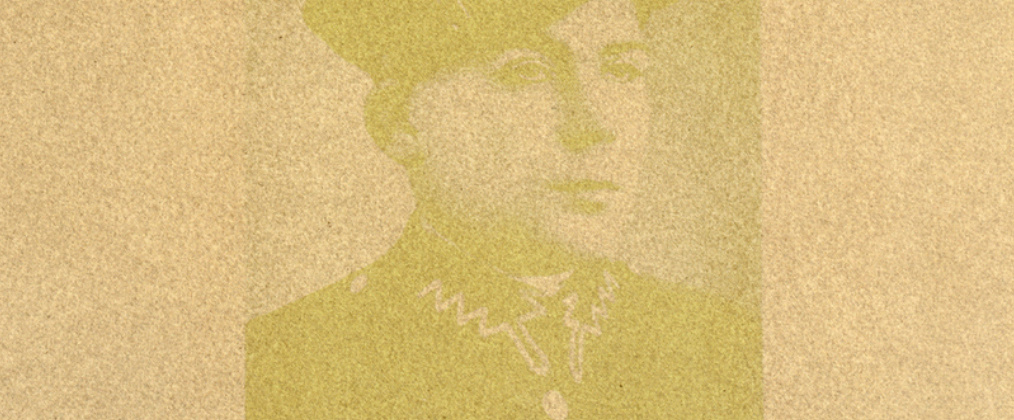Serdecznie zapraszamy na wykład The Landscape of our Memory Gabrieli Bulisovej i Marka Isaaca (Fulbright Scholar Program, stypendium realizowane w Akademii Sztuk Pięknych w Warszawie, Wydział Sztuki Mediów, pod opieką naukową prof. Sławomira Ratajskiego).
Wykład (w języku angielskim) odbędzie 25 kwietnia (wtorek) o godzinie 19.30 w sali 1.01 na Wydziale Badań Artystycznych i Studiów Kuratorskich ASP w Warszawie, ul. Wybrzeże Kościuszkowskie 37/39.

Portrait of Zaidal Kwiat, anthotype, 2022, Gabriela Bulisova & Mark Isaac. Zaidal Kwiat was born in Piaski in 1915, made his living as a mechanic prior to World War II, and served as a soldier in the Polish army. He was murdered in 1942, and his body was placed into one of at least three confirmed mass graves in the Jewish cemetery. This image was created with emulsion from linden and maple leaves gathered at the mass killing site.
Gabriela Bulisova and Mark Isaac are independent artists from Washington, D.C. who are currently in Poland for ten months under the auspices of the Fulbright Scholar Program. They are both affiliated with the Academy of Fine Arts in Warsaw, Faculty of Media Art, under the mentorship of prof. Sławomir Ratajski.
The Landscape of our Memory is a long-term multimedia project, currently in progress, that addresses the “dispersed Holocaust” or “Holocaust by Bullets” by commemorating individuals who are buried in mass grave sites in Central Europe. Inspired by the work of academics studying the Environmental History of the Holocaust, the artists also explore the links between genocide and ecocide and call attention to the environmental crises we currently face, including climate change.
The duo is creating portraits of individuals murdered during the dispersed Holocaust using the antique “anthotype” technique, in which photographs are created from plant material. Because they gather plant material from the specific site where the bodies of the murdered individuals lie, the photograph likely contains something of his or her remains. The physical trace of these individuals restores their humanity and avoids consigning them to the status of faceless statistics.
In order to ensure proper memorialization of those for whom a photograph does not exist, the artists are also working with the concept of “witness trees” or “trees as living memorials” to Holocaust atrocities. Their work expands that concept to include trees that are witnesses to severe environmental damage, including the climate crisis. As the project progresses, they will also use video projection, sound, and other strategies to call attention to the links between genocide and ecocide, the contemporary threat both pose in Ukraine and elsewhere, and the importance of preventing them in the future.

